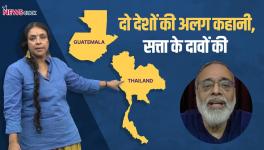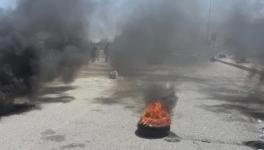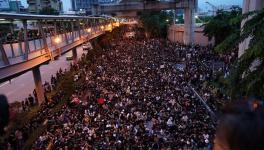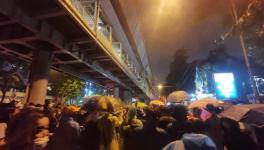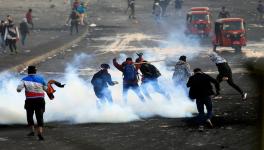As Thailand Continues Repression, Protesters Stand Guard Against Coup
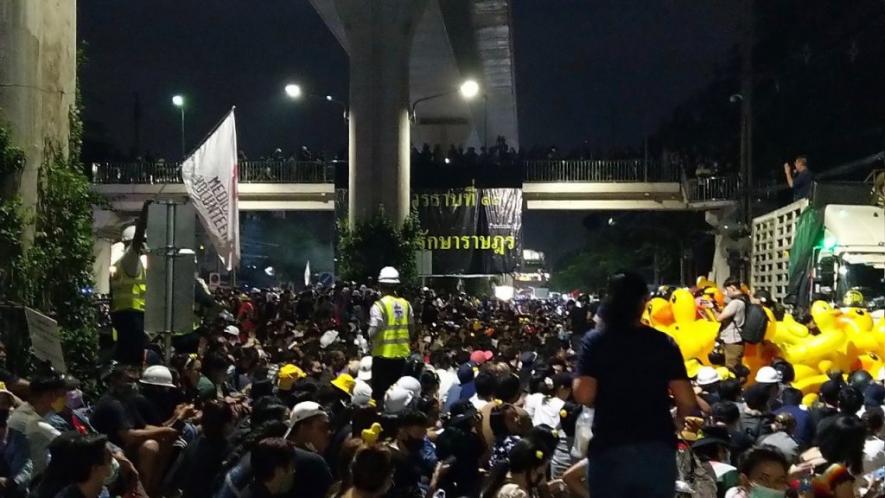
Protesters occupying the Phahon Yothin Road that leads to the 11th Infantry Regiment under the direct command of the Thai king. (Photo: Prachatai/Twitter)
Five Thai human rights activists presented themselves before the police on Monday, November 30 as the state continues its crackdown on the massive protests that have been taking place for months, media reports said. The five activists – Arnon Nampa, Panusaya Sithijirawattanakul, Parit Chiwarak, Panupong Jadnok and Patiwat Saraiya – were among those summoned to face lèse-majesté (insulting the monarchy) charges. If convicted, the activists could face a jail term of up to 15 years. Several more activists will appear before the police in the coming days.
Meanwhile, the protesters have intensified their activities. Protesters demonstrated outside the barracks of a royal guard regiment on Sunday. The garrison of the 11th Infantry Regiment is one of the two royal guard units directly under the command of Thai king Vajiralongkorn. Over a thousand people marched to the gates of the garrison and occupied the Phahon Yothin Road that leads to the base.
Watch | The Thai uprising against the military-monarchical complex
The demonstration is the latest attempt to put pressure on the royalty and is being seen as a message to the military-backed government of prime minister Prayut Chan-o-cha. The march was held two days after concerns of another coup prompted “coup prevention” rallies and demonstrations at major intersections across the national capital, Bangkok.
The “coup-making” regiment
During the 2010 anti-junta protests led by the United Front for Democracy Against Dictatorship or the “Red Shirts”, the 11th Infantry regiment was used to violently quell the protests and unrest. The violence killed over 80 civilians and injured more than 2,000 that year. Because of its long history of violence and repression, this regiment, and specifically its garrison which trains some of the elite forces within the Thai Army, has been called the “coup-making” regiment.
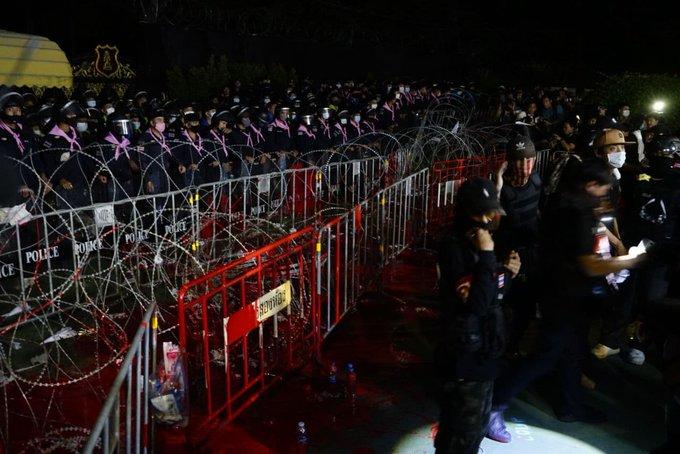
Protesters threw red paint on the barricades put up by the Thai police to represent the violent repression of the “Red Shirts” in past democratic protests. (Photo: Prachatai)
The 11th Infantry Regiment, along with the 1st Infantry Regiment, was transferred by the Chan-o-cha government to the Royal Security Command which is directly under the monarch in October 2019. The regiment has a grim past as a leading elite force employed by successive governments against the communist-led rebellion between 1965 and 1983. It was also used for suppressing democratic protests against some of the more recent military coups.
The protesters on Sunday presented a list of demands and asserted that it was unnecessary for the king to command a regiment of his own. They argued that transferring army units under the crown “not only severely undermines democracy but also destabilizes the stability and righteousness of the royal institution.”
A coup around the corner?
With the widespread deployment of armed and paramilitary forces and the revival of the lese majeste laws against protesters earlier this month, concerns are being raised about the possibility of another coup in the country. These concerns did not subside despite assurances from the prime minister and the commander-in-chief of the Thai Army denying any possible coup.
On November 27, thousands of protesters occupied major intersections across Bangkok and held “anti-coup” drills. According to Prachatai, protesters employed lessons learnt from the failed attempt by pro-democratic protesters at blocking the last coup in 2014.
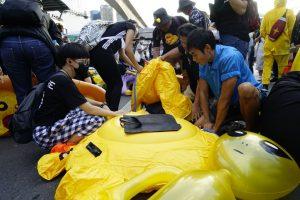
Protesters with inflatables during the “anti-coup” drills on November 27. (Photo: Prachatai)
“In 2014, the coup happened. If people had come out en masse, Prayut would not be able to stay. From now on, if it happens one day, we must come out to resist, to object as a confirmation that there are people that do not want dictatorship,” said activist Jatupat Boonpattararaksa while underlining the demands of the anti-coup drills.
“Come out to raise the 3-finger salute. Come out to do anything to show that there are people that do not agree with coups that use force to solve political problems,” he added.
Since the 1932 revolution, Thailand has seen 13 coup d’etats which have led to the installation of military regimes, and nearly another dozen failed attempts. The last coup, in 2014, brought Chan-o-cha to power.
In all the cases, democratically elected regimes were dismantled and the constitution was radically altered to ensure control of the military and the royal family in Thailand’s political process. Since 1932, ruling monarchs have made use of their limited constitutional powers to the benefit of different juntas and right-wing regimes.
Get the latest reports & analysis with people's perspective on Protests, movements & deep analytical videos, discussions of the current affairs in your Telegram app. Subscribe to NewsClick's Telegram channel & get Real-Time updates on stories, as they get published on our website.









